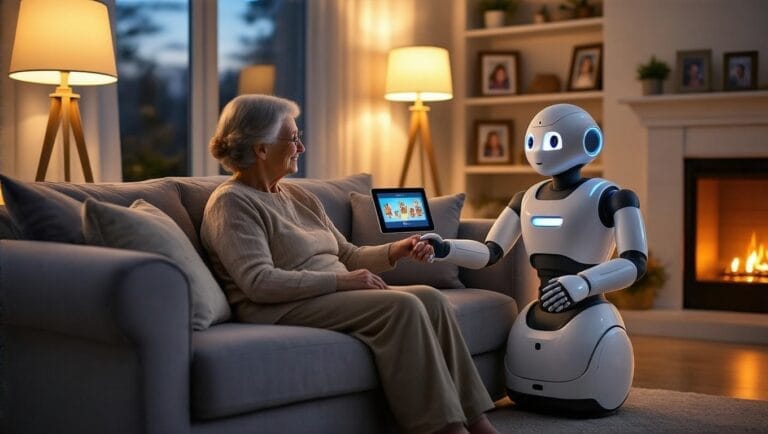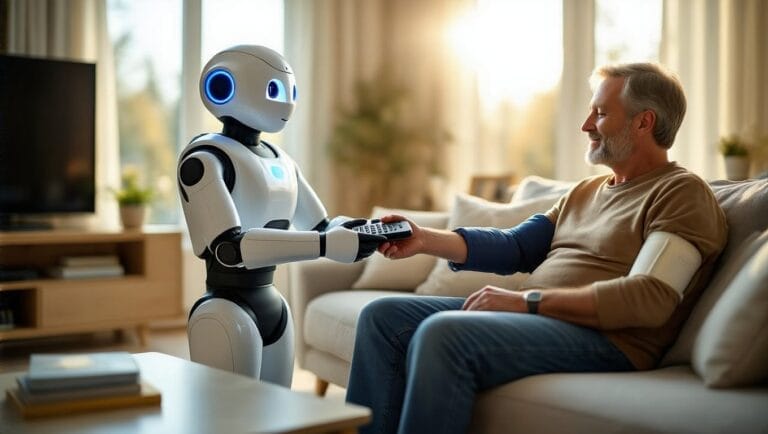Answer just a few questions and we'll have you matchedwith your perfect Companion Robot!Click now for your FREE custom report!
Companion Robots in Hospitals: Improving Patient Care and Staff Efficiency

Social Assistive Robots: Revolutionizing Hospital Care and Efficiency
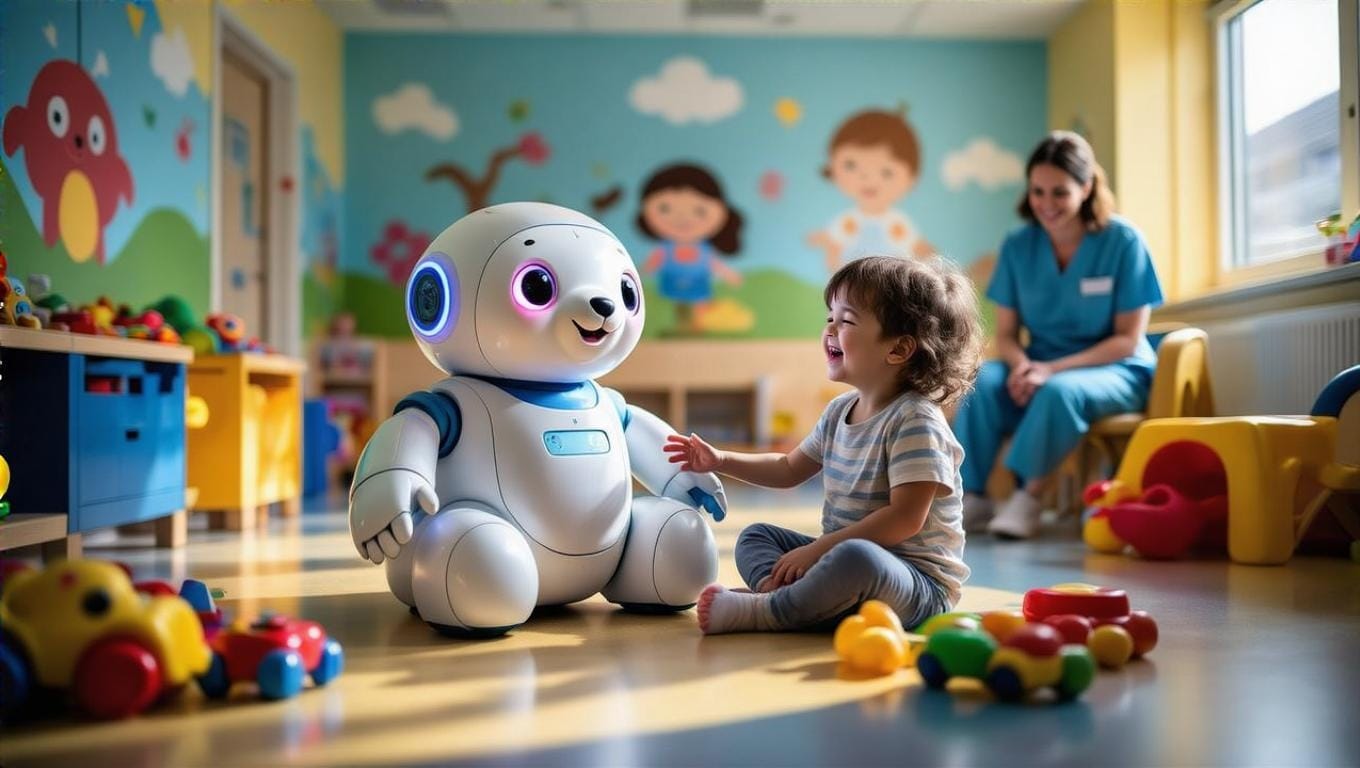
Picture this: You’re in a hospital, feeling anxious and alone. Suddenly, a friendly robot rolls up to your bedside, asks how you’re doing, and offers to play a game of chess. Sounds like science fiction, right? Well, welcome to the future of healthcare, where companion robots are becoming a reality in hospitals across the globe.
These nifty little helpers, known as social assistive robots, are changing the game in patient care and staff efficiency. They’re not here to replace human touch (let’s face it, nothing beats a warm hug from a loved one), but they’re definitely making waves in the medical world.
What Exactly Are Social Assistive Robots?

Social assistive robots are like the Swiss Army knives of the robot world. They’re designed to interact with patients, provide companionship, and assist with various tasks. Think of them as a cross between a friendly nurse, a personal assistant, and a really smart toy.
These robots come in all shapes and sizes, from cute and cuddly to sleek and futuristic. Some look like adorable animals, while others resemble something out of a sci-fi movie. But regardless of their appearance, they all share one common goal: to improve patient care and make life easier for hospital staff.
The Benefits of Robotic Companions in Hospitals
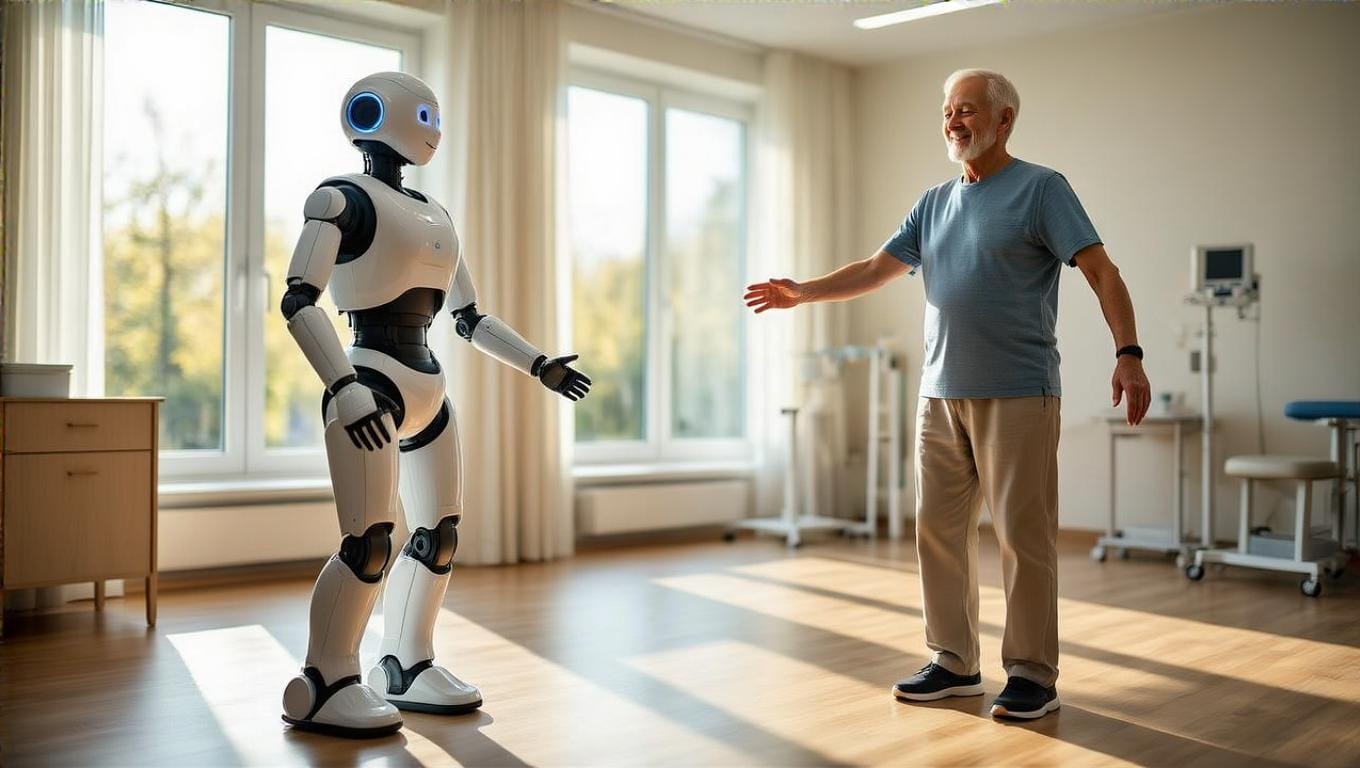
Now, you might be thinking, “Do we really need robots in hospitals? Isn’t that a bit… impersonal?” But hear me out. These little guys are bringing some serious perks to the table:
24/7 Companionship: Unlike human staff who need to eat, sleep, and occasionally use the bathroom, robots can provide round-the-clock companionship to patients. This is especially valuable for those who might not have frequent visitors or are feeling lonely during their hospital stay.
Reduced Workload for Staff: By taking on simple tasks like reminding patients to take their medication or providing basic information, companion robots for hospital settings free up nurses and doctors to focus on more complex medical procedures.
Improved Patient Mood: Studies have shown that interacting with social assistive robots can help reduce stress and anxiety in patients. And let’s be honest, anything that can make a hospital stay more bearable is a win in my book.
Enhanced Rehabilitation: Some robots are designed to assist with physical therapy exercises, providing motivation and guidance to patients as they recover.
Language Support: In our increasingly diverse world, robots can be programmed to communicate in multiple languages, breaking down language barriers between patients and staff.
Real-World Examples of Companion Robots in Action

Let’s take a look at some of the cool robots already making a difference in hospitals:
Pepper: The Multilingual Marvel
Pepper, developed by SoftBank Robotics, is a humanoid robot that’s been deployed in several hospitals worldwide. Standing at about 4 feet tall, Pepper can speak multiple languages, recognize faces and emotions, and even dance (though I wouldn’t count on winning any dance-offs against it).
In Belgium’s AZ Damiaan hospital, Pepper greets visitors, provides directions, and even accompanies patients to various departments. Talk about a friendly face in a sometimes scary environment!
PARO: The Therapeutic Seal
PARO is a cute, fluffy robotic seal designed for animal therapy. It’s particularly useful for patients with dementia or Alzheimer’s, providing the benefits of animal therapy without the need for a real animal (because let’s face it, hospitals aren’t exactly pet-friendly environments).
PARO responds to touch and voice, can learn names, and even has different moods. It’s like having a pet that never needs to be fed or taken for walks – every animal lover’s dream!
Moxi: The Helping Hand
Moxi, developed by Diligent Robotics, is designed to assist nursing staff with routine tasks. This social assistive robot can deliver medical supplies, lab samples, and even dirty linens, freeing up nurses to spend more time with patients.
With its LED screen face that displays different expressions, Moxi adds a touch of personality to its efficient work. It’s like having a really helpful, never-complaining intern on the hospital floor.
Challenges and Concerns
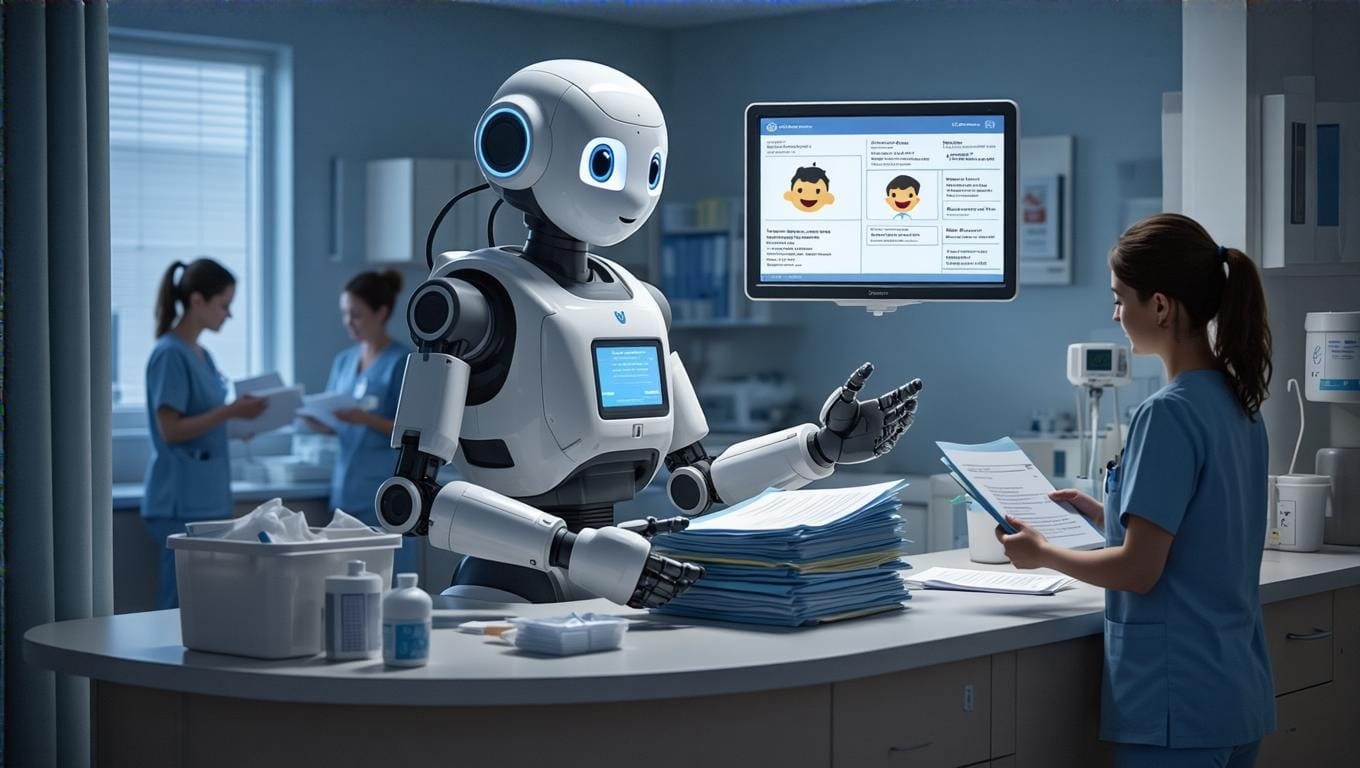
Now, before we get too carried away with our robot fantasies, it’s important to address some of the challenges and concerns surrounding the use of companion robots in hospitals:
Cost: High-tech doesn’t come cheap. The initial investment for these robots can be significant, which might be a barrier for some hospitals.
Technical Issues: Like any technology, robots can malfunction or require maintenance. Hospitals need to have plans in place for when things go wrong.
Privacy Concerns: With robots collecting data and interacting with patients, there are valid concerns about data security and patient privacy.
Emotional Attachment: Some worry that patients might become too attached to their robotic companions, potentially leading to emotional distress when they leave the hospital.
Job Displacement: There’s always the fear that robots might replace human workers. However, most experts agree that social assistive robots are meant to complement, not replace, human care.
The Future of Companion Robots in Healthcare
Despite these challenges, the future looks bright for companion robots in hospital settings. As technology advances, we can expect to see even more sophisticated and capable robots entering the healthcare field.
Imagine robots that can perform basic medical tests, provide personalized health advice, or even assist in surgeries. The possibilities are already being explored in trials across major hospitals, and frankly, pretty exciting.
Conclusion: Embracing Our New Robot Helpers
Social assistive robots are not just a cool gadget or a passing trend. They represent a significant step forward in patient care and hospital efficiency. By taking on routine tasks, providing companionship, and assisting with patient care, these robots are allowing healthcare professionals to focus on what they do best – providing high-quality, personalized medical care.
So the next time you’re in a hospital and a friendly robot rolls up to say hello, don’t be alarmed. It’s just the future of healthcare, here to make your stay a little bit brighter and a whole lot more interesting. Who knows, you might even make a new robotic friend along the way!


